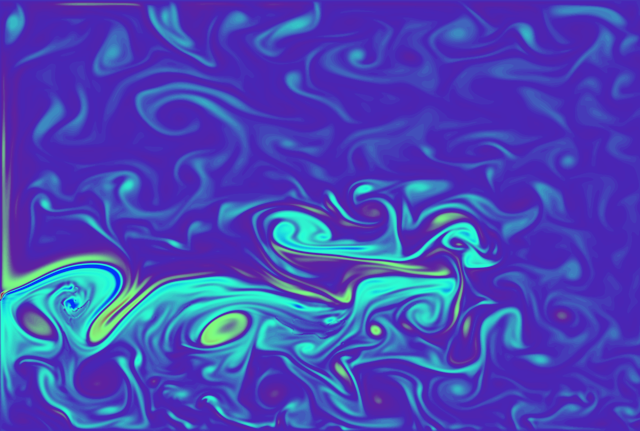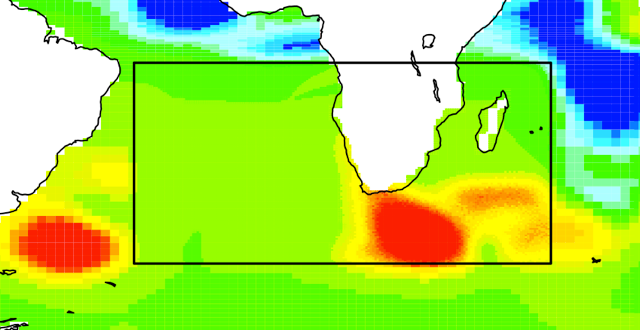Section: New Results
Data Assimilation for Ocean Models
Development of a Variational Data Assimilation System for OPA9/NEMO
Participants : Arthur Vidard, Franck Vigilant, Claire Chauvin, Bénédicte Lemieux-Dudon, Pierre-Antoine Bouttier, Laurent Debreu.
We are heavily involved in the development of NEMOVAR (Variational assimilation for NEMO). From 2006, we built a working group (coordinated by A. Vidard) in order to bring together various NEMOVAR user-groups with diverse scientific interests (ranging from singular vector and sensitivity studies to specific issues in variational assimilation), and to get technical and scientific support from Inria Sophia (Automatic adjoint derivation, TROPICS project-team) and ECMWF (Parallelization). This project aimed at avoiding duplication of effort, and at developing a common NEMOVAR platform. It has led to the creation of the VODA (Variational Ocean Data Assimilation for multi scales applications) ANR project
The project aims at delivering a common NEMOVAR platform based on NEMO platform for 3D and 4D variational assimilation. Following 2009-10 VODA activities, a fully parallel version of NEMOTAM (Tangent and Adjoint Model for NEMO) is now available for the community in the standard NEMO version. This version is based on the released 3.0 version of NEMO. Two upgrades were done to follow NEMO standard development race. As a consequence, NEMOVAR is also available for NEMO version 3.2, 3.2.1 and 3.2.2 both offer fully parallel features. The local group has developed a python interface engine (PIANO) to perform test and run on NEMO. A constant support to NEMOVAR project is ensured to deliver a focused response on dedicated issue (internal and external interaction).
We are also investigating variational data assimilation methods applied to high resolution ocean numerical models. This part of the project is now well advanced and encouraging preliminary results are available on an idealized numerical configuration of an oceanic basin (see Figure 4 ).
A new topic has been explored this year in the framework of VODA: data assimilation in a framework of nested models. It makes full use of the AGRIF capabilities of NEMO and follows previous work done on a toy model during the PhD thesis of E. Simon. Some early results are available with a global ocean 2 degrees configuration including a 1/2 degree zoom on the Agulhas region (see Figure 5 ).
As a side project we collaborate with Mercator-Ocean in order to use the adjoint to perform sensitivity analysis with the fourth of a degree global model used for the reanalysis. This collaboration that includes both heavy software developments and challenging scientific investigation, has been going on for 2 years now and is producing interesting results for both part that still need to be published.
Apart from the VODA ANR project, the NEMOVAR working group gets additional financial support by LEFE-Assimilation and the Mercator National Programs.
Variational data assimilation into highly nonlinear ocean models
Participants : Pierre-Antoine Bouttier, Eric Blayo, Jacques Verron.
The purpose of this study is to explore the behaviour of variational data assimilation methods in a non-linear ocean model. In an eddy-permitting or eddy-resolving ocean model, controlling mesoscale eddies activity is crucial for data assimilation methods. Our goal is to highlight the impact of these non-linearities on the assimilation system. To illustrate this, test experiments are performed with a double-gyre NEMO configuration at different resolutions (1/4°, 1/12°) which mimics Gulfstream-like behaviour in term of eddy system, and an incremental 4D-VAR formulation for the assimilation system.
First, we are mainly interested in observing the impact of the length of assimilation window on the quality of the analyzed trajectory. For that, we are doing twin experiments with 1/4° model, using simulated altimeter data, for different lengths of assimilation window. Helped by diagnoses on error scales, we also attempt to link the non-linear phenomena and error structures observed after assimilation quantitavely and qualitatively.
Then, by increasing the model resolution (and consequently mesoscale eddy activity), we bring to light the sensitivity of our assimilation system to non-linearity by repeating the same experiments on the length of assimilation window, and the same diagnoses about error structures.
Assimilation of Lagrangian Data
Participants : Claire Chauvin, Maëlle Nodet, Arthur Vidard.
When an observation is given at a sequence of positions along the fluid flow, then it can be defined as Lagrangian, from a mathematical point of view. From this sequence of positions (for instance the profiling drifting floats of Argo program), one can deduce important information on the stream that transports the drifters. Such an information has not yet been exploited in an operational framework, although previous works [82] have shown the interest of assimilating this new type of data.
A task of the ANR VODA has thus been defined in order to develop the tools for the variational assimilation of Lagrangian data in the context of NEMOVAR. C. Chauvin is an engineer working on this task. She first constructed the observation operator, which requires the interpolation of the velocity at any point of the domain. This interpolation operator is not linear for the general grids used in NEMO, implying heavy tangent and adjoint operators.
Tangent and adjoint procedures associated to this interpolation method have been developed, as well as the tests of these procedures on the main test configurations GYRE and ORCA2. Their implementation in NEMOVAR has required a specific application, in order to be consistent with the conventions and data structures already present in NEMOVAR. We also performed extensive numerical experiments to assess the impact of Lagrangian data assimilation, and its complementarity with other types of data, and we prepare an article to sum up the results. Preliminary results have been presented at EGU [34] .




